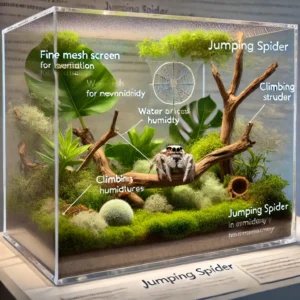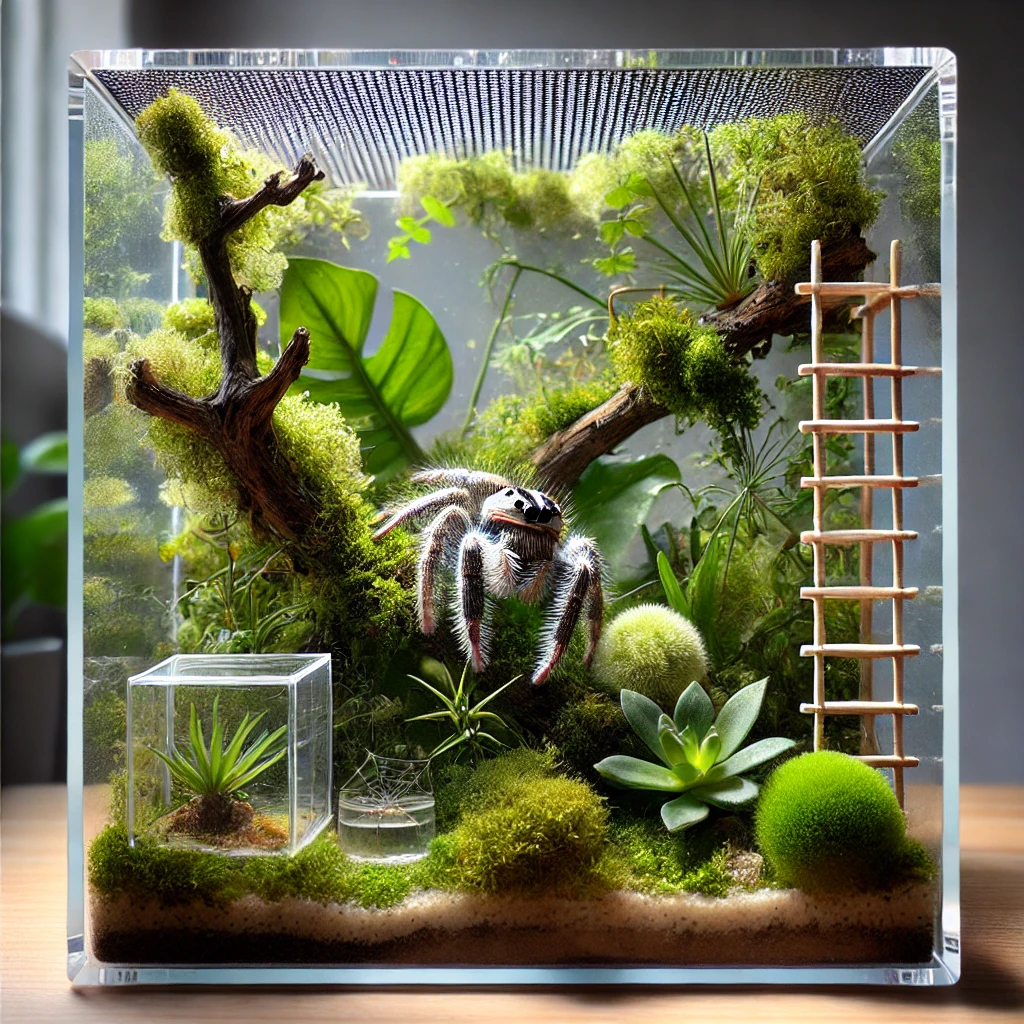Jumping Spider Enclosure: How to Create the Perfect Habitat
Jumping spiders are fascinating pets known for their incredible agility and curious personalities. But just like any pet, they need the right environment to thrive. If you’re wondering how to set up the perfect jumping spider enclosure, this guide has you covered! From the best materials to use to essential care tips, let’s explore everything you need to know about building a home your eight-legged friend will love.
What Is a Jumping Spider Enclosure?
A jumping spider enclosure is a carefully designed habitat that provides your spider with everything it needs, from places to hide to spots to explore. The enclosure mimics the natural environment of the spider while keeping it safe, comfortable, and well-fed. The setup doesn’t have to be fancy, but it should cover a few basics to ensure your jumping spider remains happy and healthy.
Key Elements of a Jumping Spider Enclosure
Here are the essential elements of a jumping spider enclosure that will make it the perfect home:
- Size: A jumping spider doesn’t need a massive enclosure. Something around 12″ x 12″ x 12″ is more than enough room for your spider to jump, explore, and hide.
- Ventilation: Proper air circulation is essential to prevent mold. Mesh lids or enclosures with tiny holes work best.
- Substrate: A layer of substrate, like coconut fiber or soil, helps retain moisture and provides a naturalistic look.
- Hiding Spots: Your spider will love having places to hide. Consider adding small plants, bark, or even cardboard tubes.
- Vertical Space: Jumping spiders love to climb, so include branches or artificial plants to make use of vertical space in the enclosure.
- Water Source: A small bottle cap of water or misting the enclosure once a day provides the needed humidity and hydration.
How to Set Up a Jumping Spider Enclosure

Follow these steps to set up the ideal jumping spider enclosure:
Step 1: Choose the Right Container
Start by selecting a container. Plastic or glass enclosures are both good options, as long as they have proper ventilation. Containers that open from the top or side are best, so you can easily access the spider when necessary.
Step 2: Add Substrate
Lay down a 1-2 inch layer of substrate, such as coconut fiber or soil. This will help maintain humidity and give the enclosure a natural feel.
Step 3: Decorate with Plants and Branches
Add artificial or live plants, bark, and small branches to the enclosure. This not only makes the space visually interesting but also gives your spider places to explore and climb. Jumping spiders love vertical spaces, so make sure there’s plenty of height for them to use.
Step 4: Ensure Proper Ventilation
A well-ventilated enclosure is crucial for maintaining the health of your spider. Make sure the lid has small holes or mesh to allow air to circulate, but ensure the holes are too small for the spider to escape!
Step 5: Provide a Water Source
Jumping spiders don’t need a large water bowl. Misting the enclosure lightly once a day or placing a tiny bottle cap of water will suffice to keep them hydrated.
Maintenance Tips for a Healthy Jumping Spider

Keeping your jumping spider enclosure clean and properly maintained is crucial for your pet’s health. Here are some simple maintenance tips:
- Remove uneaten prey daily to prevent mold and pests.
- Mist the enclosure once a day to maintain humidity.
- Clean the substrate every few weeks to keep the enclosure fresh and free of harmful bacteria.
- Regularly check for mold or other issues, especially around the substrate and water source.
Frequently Asked Questions (FAQs)
What size should a jumping spider enclosure be?
For a single jumping spider, an enclosure around 12″ x 12″ x 12″ is ideal. They don’t need a massive space but do appreciate vertical climbing room.
How often should I clean the enclosure?
It’s a good idea to spot clean the enclosure daily by removing uneaten food and checking for mold. A deep clean of the substrate every few weeks will keep the habitat in top condition.
Can I use live plants in the enclosure?
Yes! Live plants can help with humidity and make the enclosure more natural. Just be sure the plants are spider-safe and won’t introduce harmful chemicals or pests.
Conclusion
Setting up the perfect jumping spider enclosure doesn’t have to be complicated. With the right materials, a little creativity, and some regular maintenance, you can provide your jumping spider with a safe, comfortable, and stimulating home. Whether you’re a beginner or a seasoned spider enthusiast, following these tips will help ensure your jumping spider thrives in its new habitat.














Post Comment